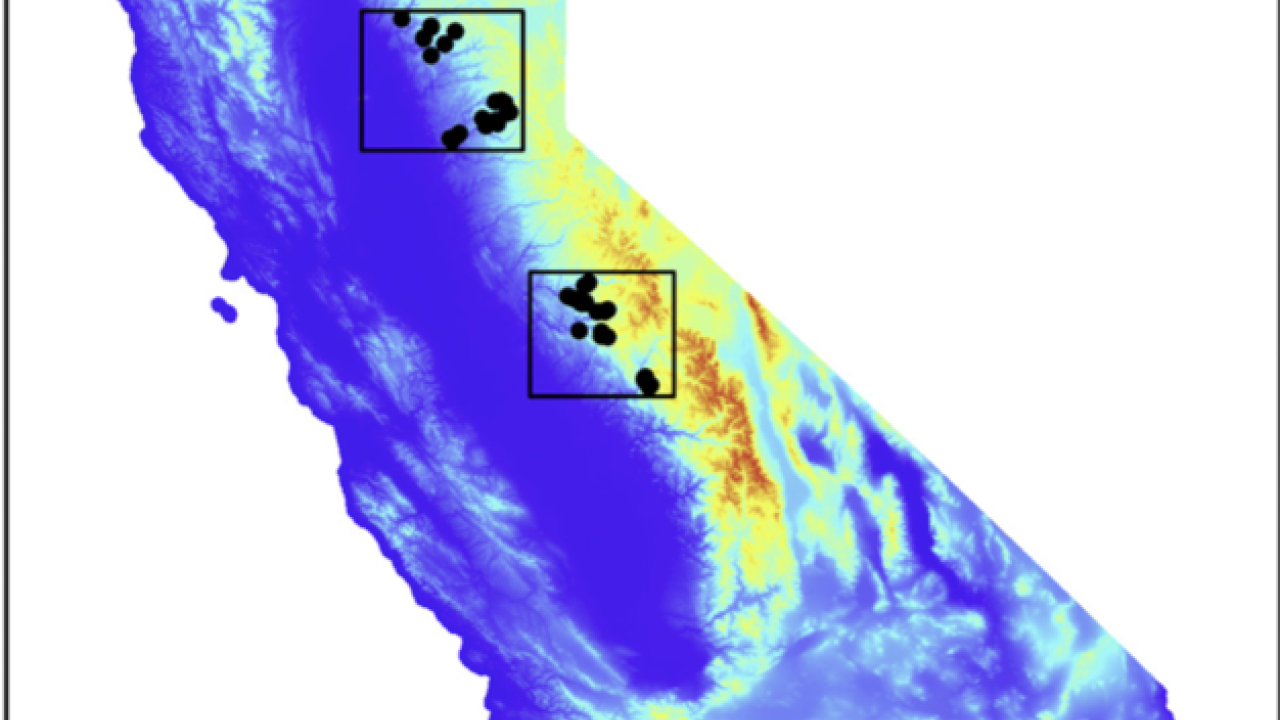
Chris Wong's paper on remote sensing of tree-ring width published
Highlights
- •GPP, NDVI, NIRv, CCI and SIF products were evaluated in Sierra Nevada conifers.
- •Relationships with tree-ring width improved upon consideration of a legacy effect.
- •MODIS GPP best reflected the interannual variation of tree-ring growth.
- •Site-specific environmental factors are also important considerations.
Abstract
Carbon uptake and tree growth are important factors for assessing productivity and long-term carbon storage. Measurements of radial stem growth are mainly performed at the individual tree scale and can be used to infer ecosystem net primary productivity (NPP). However, these measurements are spatially limited, and remote sensing provides a promising tool to track vegetation function and productivity across spatial scales, making it a viable technique for assessing variation in interannual tree growth and carbon storage. In this study we examined the correspondence between in-situ annual tree-ring width across four dominant evergreen species in the Sierra Nevada and a wide range of remotely sensed products linked to carbon uptake including NPP, gross primary productivity (GPP), net photosynthesis (PSN), normalized difference vegetation index (NDVI), near infrared reflectance of vegetation index (NIRV), and chlorophyll/carotenoid index (CCI) from MODIS (Moderate resolution Imaging Spectroradiometer) as well as downscaled solar-induced fluorescence (SIF) products, using a 14 year dataset (2000–2014) across 62 forest sites. We show that variation of annual tree-ring width was best captured by the annual sum of MODIS GPP, with a legacy effect (5-month backwards shift). Across all forest sites, MODIS GPP with a 5-month legacy effect showed moderate correspondence with tree-ring width (r = 0.60). Within each individual site, however, the interannual correspondence between MODIS GPP with a legacy effect and tree growth was stronger (median r = 0.70 vs 0.14 without a legacy effect). The importance of legacy effects in explaining tree growth variation within sites indicates that tree growth each year is influenced by carbon uptake during the latter part of the previous growing season. Additional local environmental factors also explained annual variation in tree-ring width, including (in descending order of importance) local tree density, latitude, slope, DBH, elevation and aspect.
Wong, C. Y., Young, D. J., Latimer, A. M., Buckley, T. N., & Magney, T. S. (2021). Importance of the legacy effect for assessing spatiotemporal correspondence between interannual tree-ring width and remote sensing products in the Sierra Nevada. Remote Sensing of Environment, 265, 112635.
https://www.sciencedirect.com/science/article/pii/S0034425721003552